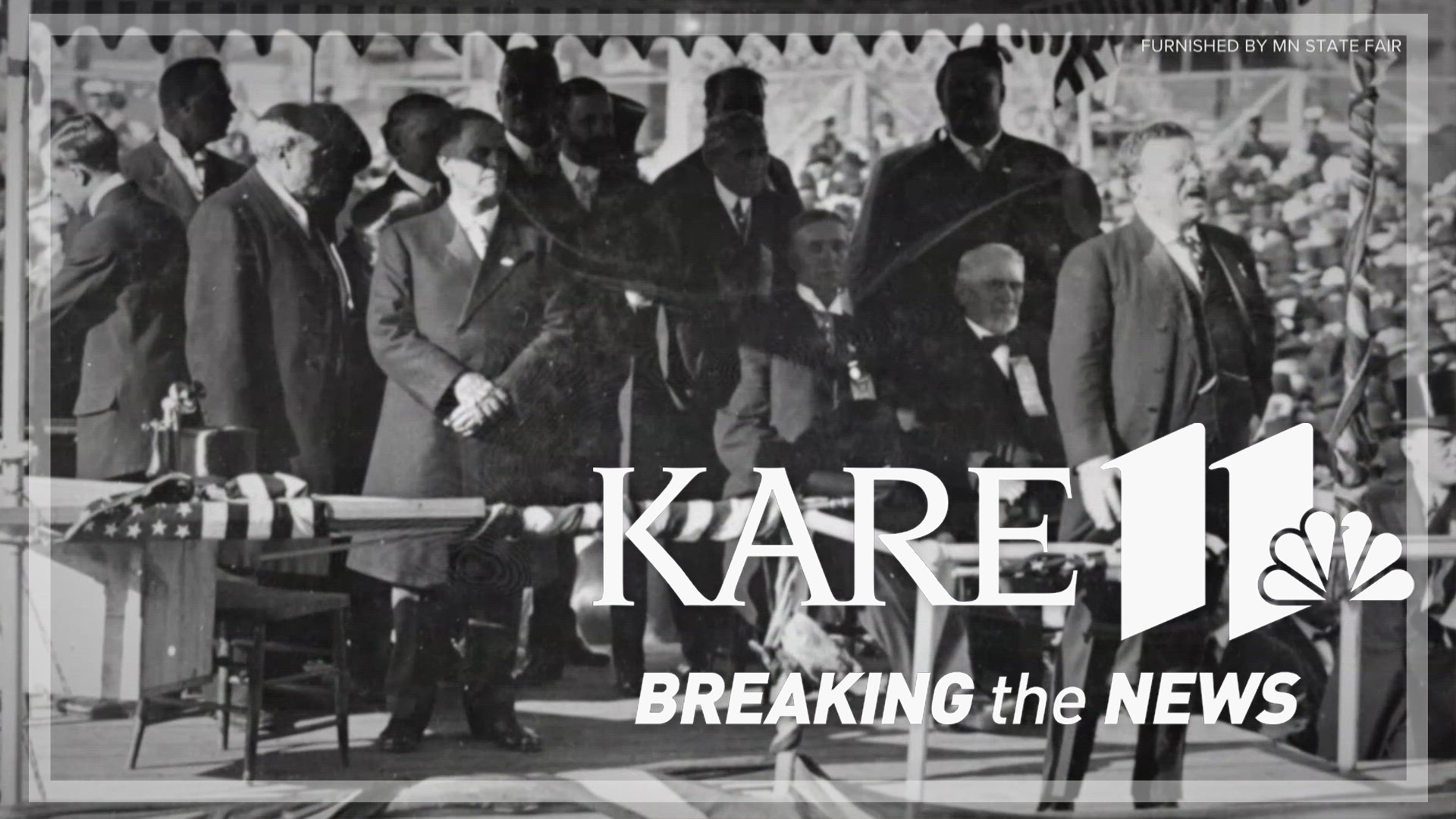FALCON HEIGHTS, Minn. — The first day of the Minnesota State Fair usually includes a full plate of food, and it inevitably comes with a side of politics... like it or not.
"It's not for me," said Asia McSwain, who came to the fair with her family. "No, no, no, not at all."
But here's a fair warning: During a presidential election year in which Minnesota's State Fair-loving Governor Tim Walz has joined Vice President Kamala Harris at the top of the Democratic ticket, a high-profile visit is likely coming and the war of political t-shirts is already on.
"I just enjoy showing off my stance while I'm here," said Troy Roff, who wore a "Dump Walz" shirt outside of the Minnesota GOP booth on Thursday.
"I come to get my t-shirts," said Jenny Kendall, who held up her new "Let's Win This" Harris/Walz t-shirt outside of the Minnesota DFL booth. "This is not the first time we've come to get our t-shirts, so I think you can mix politics and the fair very nicely."
Whether or not you agree, presidential politics have been part of the State Fair since 1878, when President Rutherford B. Hayes made the first visit.
"Teddy Roosevelt was here in 1901," said Keri Huber, archivist for the Minnesota State Fair. "This is where he gave the speech, 'Speak softly and carry a big stick, you will go far.' Just a couple weeks later the president was assassinated so Vice President Roosevelt became the President of the United States."
Roosevelt would return to the fair to deliver speeches again in 1910 and 1912.
The tradition of big political visits continued in the 1920s with Warren G. Harding and Calvin Coolidge making stops, and it continued with General Dwight D. Eisenhower in 1947.
"That was the first State Fair after we had to cancel the fair in 1945 for the war and then 1946 for the polio epidemic," Huber said.
But after the baby boom led to an attendance boom in the 1950s, the state fair board decided to dial back the political pageantry.
"I believe it was 1953 that I saw that they voted not to invite politicians," Huber said. "They were more than welcome to be here. We're just not saying, 'Yeah, come on out.'"
Since the 1980s the fair has also treated politicians like most other vendors, asking them to keep their politicking within the confines of their booths or media appearances.
"It's one of those things that, of course, you can talk to people while you're walking but you're just not supposed to outwardly go, 'Here I am, vote for me,'" Huber said.

